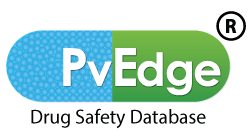Need for this
Assessing the relationship between a drug and an adverse event is a critical part of pharmacovigilance. A structured approach is needed to determine whether a reported reaction is truly linked to the drug. Without a proper framework, decision-making becomes challenging, leading to delays in safety assessments. The Causality Matrix provides a systematic way to evaluate and classify adverse events, helping healthcare professionals and regulatory agencies make informed decisions while ensuring patient safety.
How it Benefits
The Causality Matrix simplifies the assessment process by:
Managing large volumes of cases efficiently.
Gathering all relevant information needed for analysis.
Evaluating key factors that determine the likelihood of causality.
Assigning a causality level to ensure accurate classification.
How We Are Using This in Existing Products
Result of Implementation of PADER

Time Savings
Faster assessment of drug-event relationships, reducing manual workload.

Higher Productivity
Streamlined workflows allow teams to handle cases more efficiently.

Better Accuracy
A structured approach minimizes human errors in causality evaluation.

Scalability
The system adapts to increasing case volumes, ensuring seamless operations.
